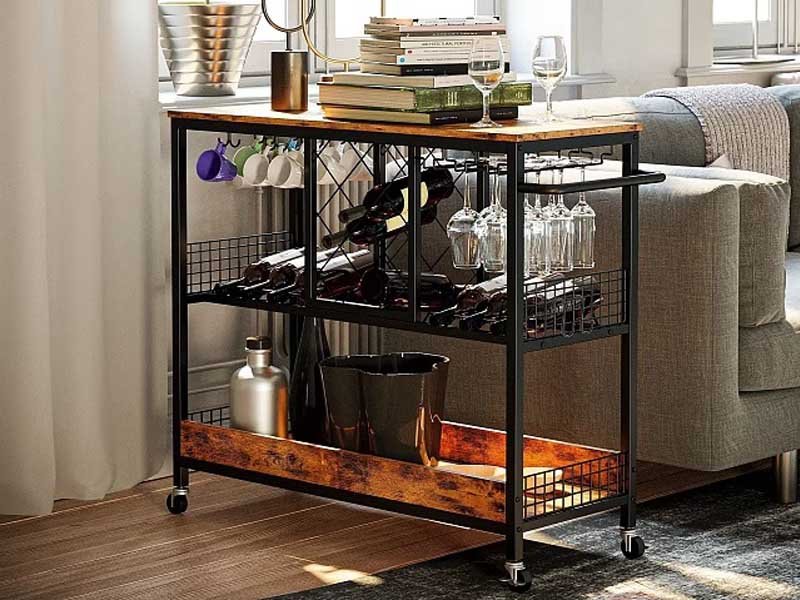As someone who appreciates durable furniture, I've often wondered how MDF compares to other materials. Finding out how MDF stands up to daily use and environmental factors has always been a priority for me, and the insights into its performance have been illuminating.
MDF, or Medium Density Fibreboard, exhibits moderate strength suitable for non-loadbearing furniture parts. Compared to plywood and solid wood, it’s less robust, especially when exposed to moisture without treatment. With proper finishes and mindful use, MDF can serve well for specific applications like shelves or decorative pieces, proving its durability in the right contexts.

To truly appreciate MDF furniture, it's vital to understand its strengths and limitations. By exploring the mechanical, environmental, and practical aspects of MDF, we can make informed choices about when and where this material shines. Let's examine the durability essentials of MDF furniture to guide your next furniture decision.
1. How Durable Is MDF Furniture Compared to Other Choices?
Some people think MDF furniture1 fails fast. Others say it is tough and practical. Many struggle to judge when it fits long-term needs and when it falls short.
MDF furniture is highly durable in some settings, but less so in others. Its strength, moisture resistance, and life span depend on design, finish, and conditions. Compare MDF to wood, plywood, and particleboard for real-life performance.
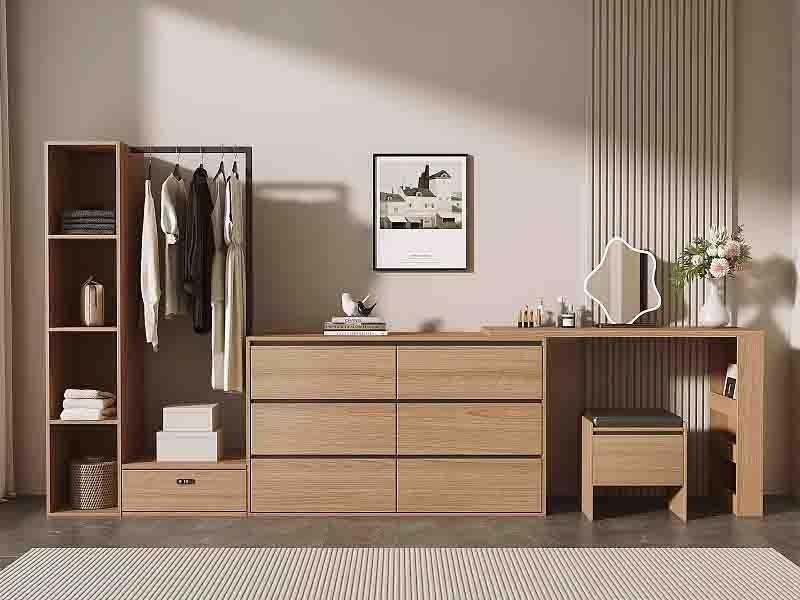
Understanding MDF’s Mechanical Strength
MDF furniture1 has a dense structure. It is made with compressed wood fibers and adhesives. Its smooth surface works well for painting and laminates. MDF can support more weight than particleboard. It comes close to plywood and falls behind hardwood. Screws and glue stick well if installed correctly. However, over-tightening fasteners can split the material. I have seen shelf joints crack from heavy loads or rough handling.
Some people use MDF for cabinetry panels and interior doors. In settings where furniture stays dry and avoids high impact, MDF endures for years. It resists small dents and general wear. The table below shows some key mechanical properties2:
| Material | Bending Strength | Screw Holding | Surface Hardness |
|---|---|---|---|
| MDF | Medium | Medium | Smooth |
| Plywood | High | High | Variable |
| Solid Wood | High | High | High |
| Particleboard | Low | Low | Soft |
MDF and Environmental Resistance
MDF does not like water. Moisture can swell the edges and weaken bonds. Unfinished or poorly sealed MDF fails quickly in kitchens or bathrooms. Still, I have used high-quality, properly sealed MDF in dry rooms with almost no problems for years. UV rays rarely affect it if the finish is good. Exposure to constant warmth or steam is a risk. MDF resists normal changes in humidity indoors better than particleboard but loses to plywood and hardwood.
Lifespan and Real-Life Performance
Well-made MDF furniture can last ten years or more. Lifespan shifts with conditions. If edges are exposed or screws are moved, parts may wear down. Plywood lasts longer in heavy-duty use. Hardwood may outlive all engineered products but costs more. MDF stands out when design flexibility3, smooth paint, or cost matter most. It is popular for shelving, desks, and painted cases. I have found that a little care goes a long way—keeping it dry and not overloading shelves makes all the difference.
Typical Failure Modes of MDF
MDF’s main problem is swelling or crumbling at unprotected edges4. Screws can strip if reused. Large furniture may sag along long spans without extra support. Minor bumps are fine, but drops or kicks at corners cause chips. Unlike wood, which may dent or split, MDF crumbles or flakes when stressed beyond limits.
Making Responsible Choices with MDF
MDF suits dry, indoor spaces with moderate use. You need to protect it from moisture and rough handling. When building for long-term, high-impact, or damp areas, consider plywood or hardwood instead. Always seal exposed edges and use hardware designed for particle-based products. Smart planning extends the service life of MDF furniture and makes it a reasonable, durable choice in many homes and offices.
MDF furniture can last for ten years or more in suitable conditions.True
When properly maintained and placed in the right environment, well-made MDF furniture can endure for a decade or longer.
MDF furniture is waterproof and can be used safely in kitchens and bathrooms.False
MDF is not waterproof; it can swell and weaken when exposed to moisture, making it unsuitable for use in high-humidity areas like kitchens and bathrooms.
2. Is MDF Strong Enough for Daily Furniture Use?
Many worry about MDF’s strength in everyday items. Choosing the wrong material causes frustration, broken furniture, and wasted money. Find out if MDF is strong enough for your needs.
MDF has moderate strength. It works well for shelves, cabinet doors, and non-loadbearing panels. But you should avoid using it in weight-bearing furniture without extra support, since it can sag or fail over time.

Understanding MDF’s Core Strength
MDF, or medium-density fiberboard, is a composite product5. I have worked with it in many projects. MDF has a density range of about 600-800 kg/m³, which puts it between particleboard and hardwood plywood. Its internal bond strength measures from 0.55 to 0.75 N/mm². This makes MDF a reliable choice for some, but not every, purpose.
When I first started making furniture, I used MDF for almost everything. It cut cleanly and painted well. However, after assembling my first bench seat, I noticed bowing just months later. The load was more than MDF could handle without help. This taught me MDF does best where the weight is spread out. Each type of furniture needs a material that matches its purpose.
Where MDF Shines
MDF works well for these uses:
- Bookshelves for light to moderate-weight items
- Cabinet doors that rarely take direct blows
- Drawer bottoms holding clothing or paper
- Wall panels and other decorative features
I often recommend MDF panels for these needs. The even surface finishes well. I see fewer splinters compared to plywood. Screwing into the face of MDF holds well enough in these cases. MDF holds up as long as you keep water away and do not overload it.
MDF Limitations You Should Know
MDF can sag if you use it for seats, beds, or table tops without a strong frame. The internal fibers are fine for stability across small areas. Across long spans or under pressure, the bond gives way. That is when you see cracks, permanent dents, or worse.
Here’s how different materials compare:
| Material | Density (kg/m³) | Internal Bond (N/mm²) | Best Use |
|---|---|---|---|
| MDF | 600-800 | 0.55-0.75 | Shelves, panels |
| Plywood | 400-700 | 0.90-1.20 | Load-bearing areas |
| Solid Wood | 500-900 | 1.00-2.00 | Heavy furniture frames |
Choosing the Right Situation for MDF
If you want an easy-to-work-with, affordable panel for shelves or cabinets, MDF is a good choice. I still use MDF for decorative wall features. For items exposed to heavy use or high impact, like benches or bed frames, I pick something else or add reinforcements.
If you reinforce MDF6, such as with hardwood framing or brackets, it can handle more. Still, I pay attention to the span and weight distribution7 at all times. Overstretching MDF means trouble.
In summary, MDF is strong enough for daily use if you keep within its limits and do not expect it to do the job of solid wood or plywood. Smart choices lead to longer-lasting furniture and fewer regrets.
MDF is suitable for shelves and cabinet doors.True
MDF's moderate strength makes it a reliable choice for light to moderate-weight applications like shelves and cabinet doors.
MDF can safely support heavy loads without any reinforcements.False
MDF can sag or fail under heavy loads without added support, making it unsuitable for weight-bearing furniture.
3. How Does Moisture Impact the Longevity of MDF Furniture?
Water exposure can quickly ruin your MDF furniture investment. Most buyers overlook this risk, only to face warping and loss of strength. Choosing the right protection prevents costly damage.
Moisture quickly weakens standard MDF, causing it to swell, warp, and lose strength. Upgrading to moisture-resistant MDF and sealing surfaces can prevent damage and ensure stability in humid or wet environments.
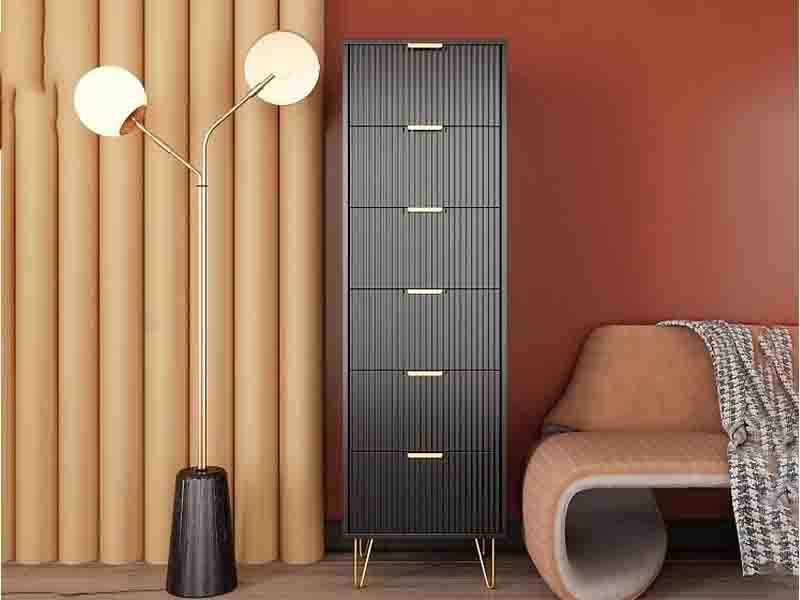
The Problem with Standard MDF and Water
Standard MDF is not designed to handle moisture. This is because MDF is hydrophilic. I have seen untreated sheets absorb water and grow in thickness by nearly a quarter. When MDF soaks up water at rates as high as 24% of its body weight, it expands. Corners and edges lose their sharpness. Surfaces bubble. Screws loosen because fibers separate. This can wreck a whole project, even in places like kitchens with only moderate humidity.
Why Moisture-Resistant MDF Outperforms the Standard
Manufacturers use different resins to make Moisture Resistant (MR) MDF8. The melamine-urea resin in MR-MDF blocks the path of water. This gives it better survival rates in damp rooms and humid weather.
Here is a quick comparison:
| Type | Water Absorption Rate | Best Environments | Key Protection Method |
|---|---|---|---|
| Standard MDF | Up to 24% by weight | Dry, interior, low humidity spaces | Basic paint or no sealing |
| Moisture-Resistant MDF | Much less than standard | Kitchens, bathrooms, humid spaces | Melamine-urea resin, full sealing |
I invested in MR-MDF panels for my home kitchen cabinets. The difference is clear. Even after months of daily cooking and dishwashing, the boards did not change shape. Ordinary MDF in a test piece nearby showed swelling and needed replacement.
Applying Sealant: Your Best Defense
I learned to never rely on MDF alone. Every exposed edge should get a coat of high-grade sealant9 or paint. This stops water from sneaking in, especially on cutouts and factory edges. Skipping this step ruined one of my first bathroom shelves. Now, I always brush and seal all edges, then use quality laminates for surface areas that will see spills or steam.
Practical Limits of MDF Outdoors
MDF is strong when it stays dry. Outside, though, rain, dew, and even thick air can break down the fibers. Not even MR-MDF can stand up to repeated outdoor soaking. That is why all guides say: never use MDF furniture outdoors10 or in places where water can touch day after day.
Key Tips for Long-Lasting MDF Furniture
I keep these rules for any MDF job:
- Use MR-MDF11 in kitchens, bathrooms, or damp rooms.
- Cover every edge and surface with paint, sealant, or laminate.
- Place furniture only in areas free from constant water or direct rain.
- Check for drips or high humidity and fix leaks right away.
Understanding these limits helps prevent expensive mistakes. With the right materials and a careful sealing process, MDF stays stable and strong—even in tough modern settings.
Moisture-resistant MDF is designed to withstand humid environments better than standard MDF.True
Moisture-resistant MDF is made with specialized resins that block water absorption, making it more suitable for damp areas like kitchens and bathrooms.
Standard MDF can handle high humidity without any negative effects.False
Standard MDF is hydrophilic and weakens significantly in humid conditions, leading to issues like swelling and warping.
4. Is MDF Durable Enough for Busy Spaces and Heavy Use?
MDF surfaces12 look smooth and attractive at first, but common problems appear over time. Scratches, dents, and general wear become obvious with daily use. Durable solutions do exist, though.
MDF is less hard than most hardwoods, making it more vulnerable to dents, scratches, and abrasion in high-traffic or heavy-use areas. Protective coatings and overlays increase resistance, while regular care helps maintain surface quality.
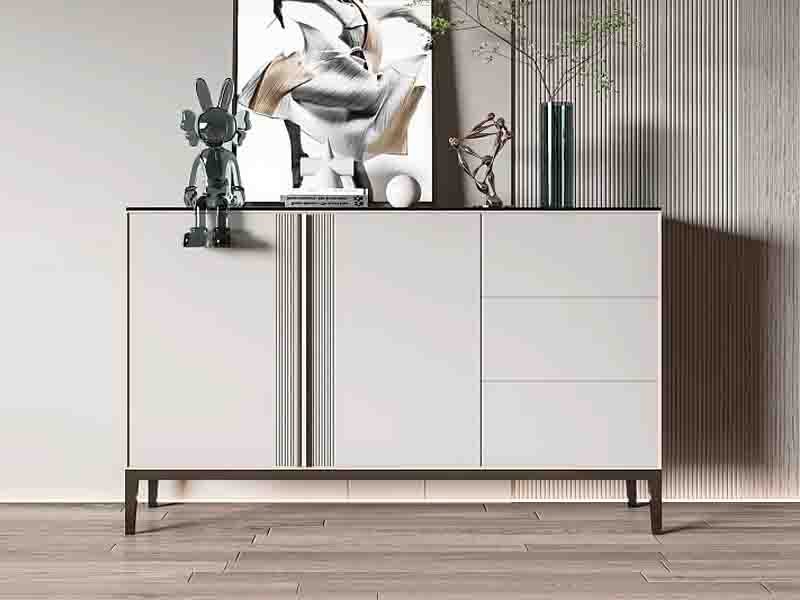
Understanding MDF’s Surface Integrity
Medium-density fiberboard (MDF) is known for its uniform texture. It machines cleanly, leaving edges that are ideal for paint or laminates. I have worked with MDF in both residential and public spaces. The smoothness makes MDF a popular choice for decorative panels, painted cabinetry, and interior furnishings.
However, MDF is not as hard as natural hardwoods. It typically has a Brinell hardness13 between 15 to 25 HB. In comparison, most hardwoods exceed this range by a wide margin. This lower hardness means impacts—such as dropped utensils or moving chairs—can leave permanent marks. I’ve seen tabletops lose their crisp look in only a few months without careful protection.
Brinell Hardness Comparison Table
| Material | Brinell Hardness (HB) |
|---|---|
| MDF | 15–25 |
| Maple (Hard) | 40–50 |
| Oak | 35–45 |
| Pine (Soft) | 15–20 |
Why Are Scratches and Dents a Major Concern?
Everyday wear is the main enemy of MDF’s attractive finish. Unlike solid wood, which compresses fibers, MDF crumbles and leaves larger, visible damage when hit or abraded. In high-traffic areas like retail counters or office furniture, these marks accumulate. Once the decorative surface is compromised, water and dust can enter, causing swelling or stains. I have seen even simple accidents—keys, pens, moving objects—lead to chipping or gouges.
How Can MDF Survive These Challenges?
There are practical solutions. Protective coatings, such as polyurethane or acrylic, increase surface resistance to scratches and water. Laminated overlays—high-pressure laminate (HPL)14 or melamine—offer even better protection. In schools and offices, I recommend these overlays. HPL, in particular, resists both impact and frequent cleaning.
Routine maintenance extends life, too. Wiping up spills fast and using coasters or mats makes a large difference. Some clients underestimate these small habits until they see early damage in busy spaces.
Choosing the Right Application
MDF’s advantages shine in decorative, low-traffic areas. But if you need durability for commercial counters, retail displays, or public desks, overlays or alternative materials are best. In my own experience, painted MDF cabinetry in moderate-use homes remains pristine for years with minimal care. In contrast, an unprotected MDF tabletop in a busy café soon showed scrapes and swelling.
Summary Table: Improving MDF’s Wear Resistance
| Challenge | Solution | Effectiveness |
|---|---|---|
| Dents, Scratches | Protective Coatings | Medium |
| Frequent Abrasion | HPL/Melamine Overlay | High |
| Water, Spills | Routine Cleaning | Medium |
MDF is not as tough as hardwoods, but with the right protective strategies15 and mindful use, you can maintain its beauty and usefulness even in busier environments. Versatility16 remains its greatest asset; smart planning ensures lasting results.
MDF surfaces can become damaged with everyday use due to their lower hardness compared to hardwoods.True
MDF is not as hard as hardwoods, making it vulnerable to scratches and dents from impacts in high-traffic areas.
MDF is just as hard as most hardwoods, making it suitable for heavy-use areas without protection.False
MDF is significantly softer than hardwoods, which makes it inappropriate for use in high-traffic areas without protective measures.
5. How Can You Improve Screw Holding in MDF Edges?
Weak edge strength in MDF often leads to screw loosening17. This creates structural risks. Smart hardware18 and reinforcement can boost performance and durability.
Screw holding in MDF edges can be improved by using confirmat screws, pre-drilling, gluing, and reinforcing critical load zones with wood inserts or edging. Avoid repeated disassembly and excessive edge-side loading for best long-term results.
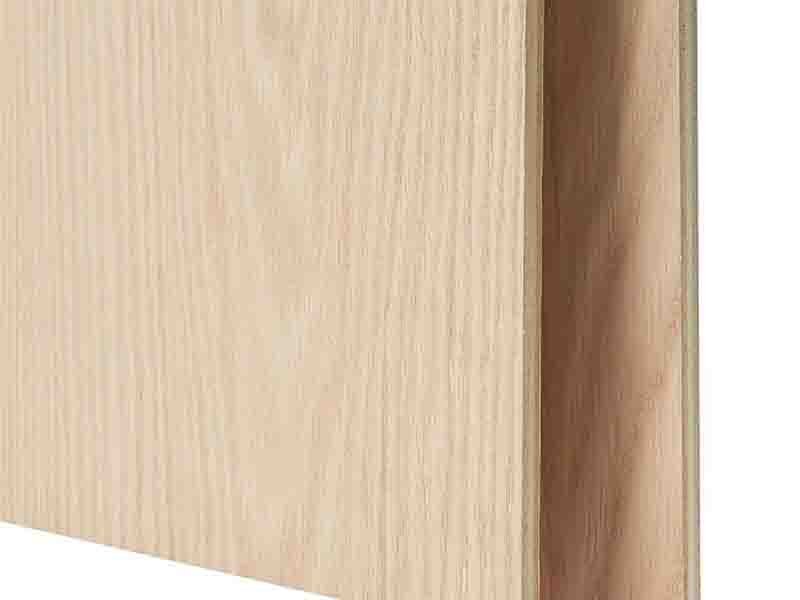
Understanding the Problem: Why Edge Durability Fails
I have seen many furniture projects fail because of weakened edges. MDF does not have strong fibers along its edge. When I drive a screw into the edge, it often splits or the screw feels loose.
MDF (Medium Density Fiberboard) is made from fine wood fibers glued under pressure. It has a smooth face but the edges lack continuous fibers. So, when I use a regular wood screw in MDF’s edge, it does not hold as well as it does in plywood or solid wood.
Here’s a quick comparison:
| Material | Typical Screw Withdrawal (N) | Edge Durability |
|---|---|---|
| MDF | 1200 - 1500 | Low |
| Plywood | 2000 - 2500 | Medium |
| Solid Wood | 2500+ | High |
When I try to remove and reinsert screws, the holding force drops even more. The hole can become too loose for the screw to grip. Edge breaks, splits, and sagging shelves follow. Heavy loads or movement cause furniture pieces to fail at these weak spots.
Strategies for Better Fastener Holding
Specialized Screws and Fittings
Simple wood screws will not hold for long in MDF edges. I always choose confirmat screws19 or systems with specialized metal inserts. These are designed with larger threads and a thicker core. This lets them bite better into the fiberboard.
Pre-Drilling and Gluing
Before inserting any fastener, I pre-drill the hole. This prevents splitting and ensures that the screw goes in straight. Gluing the screw into the hole also adds extra grip. I use a small amount of wood glue20 with confirmat screws for better results.
Reinforcement with Inserts or Wood Edging
Some MDF parts need to support heavy loads. In these areas, I use hardwood strips along the edges or insert metal sleeves. This spreads force from the screw over a larger area. Solid wood edging works well for longer support and aesthetics.
Avoiding Excessive Edge-Loading
Whenever possible, I try to design joints so that screws do not carry weight along the edge. I shift loads to surfaces or use extra bracing. This reduces the risk of screw failure.
Best Practices Table
| Best Practice | Benefit |
|---|---|
| Confirmat screws | Higher pull-out resistance |
| Pre-drilling | Reduces splitting |
| Gluing screws | Adds holding strength |
| Solid wood/metal inserts | Reinforces load zones |
| Avoid edge-loading | Prevents edge failures |
| Minimal reassembly | Maintains screw grip |
Conclusion
MDF is affordable and smooth. But it needs careful handling21 at the edges. When I follow these steps, my MDF projects last longer and survive daily use. For the best results, I never ignore edge durability22—one smart fix at the start prevents big repairs later.
Using confirmat screws significantly improves screw holding in MDF edges.True
Confirmat screws are designed with larger threads and a thicker core, allowing better grip in MDF's edge fibers compared to regular wood screws.
Regular wood screws provide the same level of holding strength in MDF edges as they do in solid wood.False
Regular wood screws do not hold well in MDF edges due to the lack of strong fibers, making their performance inferior to that in solid wood.
6. Which Is More Durable: MDF, Plywood, Particleboard, or Solid Wood?
Frustrated by furniture that doesn't last? I have been there too. Knowing what affects durability helps you make better choices.
Among MDF, plywood, particleboard, and solid wood, plywood and solid wood are most durable. Plywood resists bending and impact well. Solid wood lasts longest but can cost more and react to humidity. MDF is stronger than particleboard but weaker than plywood.
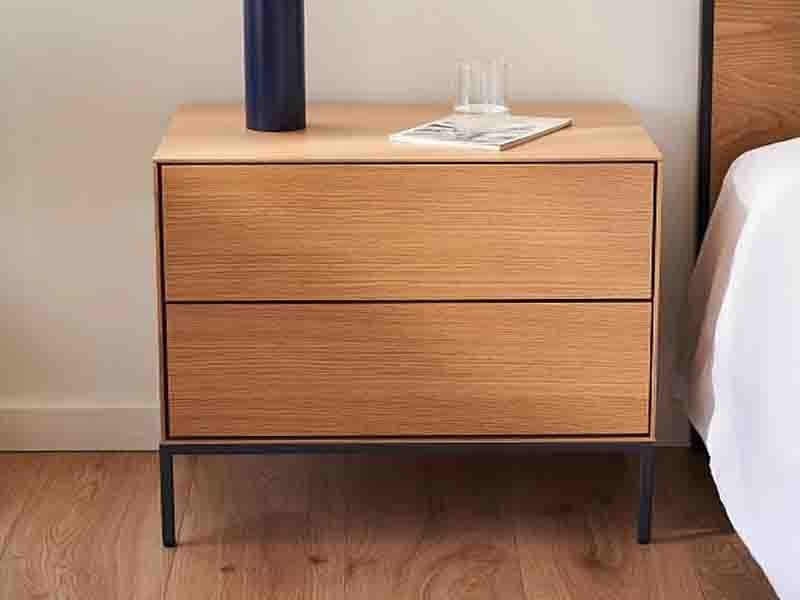
How Do These Materials Stack Up?
Many people ask which wood-based panels suit different uses. My own experience as a carpenter has taught me that material choice matters. I have built shelves that sag quickly when I pick the wrong panel. Let us break down why these differences matter.
Plywood: The Versatile Performer
Plywood23 stands out when I need both strength and resilience. It has a cross-layered veneer construction. Layers run perpendicular to each other. This pattern helps plywood resist bending under weight. When I use it for seat bases or load-bearing frames, the furniture feels sturdier. Plywood also bounces back better after an accidental hit.
MDF: Smooth but Not the Toughest
Medium Density Fiberboard (MDF) is denser and heavier than particleboard. Its fine texture lets me paint or veneer surfaces smoothly. However, MDF is not as strong as plywood in bending or shock. I have seen MDF shelves bow under heavy books. Still, its consistent surface is good for detailed finishes.
Particleboard: Budget Option with Limits
Particleboard is cheapest but also weakest. It uses small wood particles mixed with resin. In my projects, particleboard sags more and can crumble with moisture. It is best for short-term solutions or light-load furniture. Otherwise, I would not trust it for much stress.
Solid Wood: Longest Lasting, Most Variable
Solid Wood24 impresses because it can last for decades. I often repair scratches or dents in solid wood rather than replacing it. Yet, solid wood moves with humidity. I have seen panels warp during wet seasons. Price and quality vary by species too. Still, nothing beats its repairability and authenticity.
Table: Durability Comparison
| Property | Plywood | MDF | Particleboard | Solid Wood |
|---|---|---|---|---|
| Bending Strength | Excellent | Moderate | Poor | Excellent |
| Impact Resistance | Very Good | Moderate | Poor | Very Good |
| Cost | Medium | Medium-Low | Low | High |
| Surface Finish | Good | Excellent | Moderate | Variable |
| Repairability | Fair | Poor | Poor | Excellent |
| Resistance to Humidity | Good | Poor | Very Poor | Variable |
What Should You Choose?
When I want long-lasting shelves25, I use plywood. For fine finishes26, I choose MDF, but only for light loads. Particleboard is okay for temporary or low-stress uses. Solid wood is ideal if budget allows and I want to keep the piece for years. I always match the material to the job. If in doubt, checking these differences saves time, money, and disappointment.
Plywood and solid wood are the most durable options among MDF, plywood, particleboard, and solid wood.True
Plywood is recognized for its strength and resistance to bending, while solid wood is known for its longevity despite potential reactions to humidity.
Particleboard is more durable than solid wood.False
Particleboard is the weakest option discussed, making it less durable than solid wood, which is known for lasting decades.
7. Is MDF Really Safe When Exposed to Heat and Chemicals?
You may think MDF is tough, but how does it respond to heat and chemicals? Ignoring these factors can risk your project’s integrity. There are safer choices.
MDF can withstand typical home conditions, but it burns after prolonged heat above 200°C. Fire-retardant MDF helps in strict environments. Standard MDF resists mild household chemicals, but strong ones will damage it.
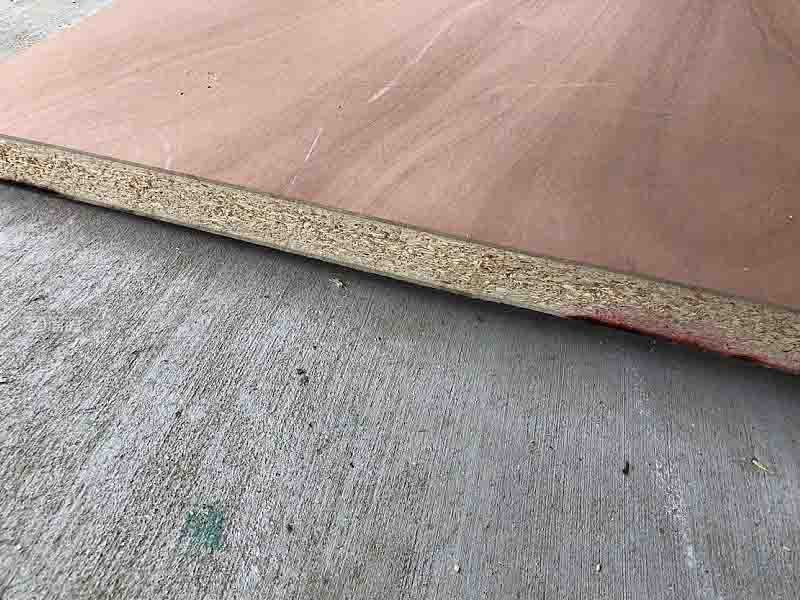
Understanding Heat Resistance in MDF
Standard MDF has limited heat performance. When I worked on a kitchen remodel, my client asked about placing MDF near ovens. MDF’s ignition temperature is about 200°C. That might seem high, but direct or prolonged heat exposure leads to charring, smoking, or even fire. This is not rare; I have seen tabletop edges darken when too close to a hot stove.
If you need better protection, fire-retardant (FR-MDF)27 boards make sense. FR-MDF is specially made with additives that slow burning and reduce smoke. These panels pass fire-safety codes used in schools, hospitals, and public buildings. They cost more, but the extra peace of mind is worth it in high-risk areas.
| Type | Heat Tolerance | Fire Conduct | Ideal Use Cases |
|---|---|---|---|
| Standard MDF | Moderate, chars >200°C | Yes, burns | Home furniture, interiors |
| FR-MDF | Improved, chars slower | Resistant | Public spaces, schools |
Chemical Stability: What Really Happens?
Many cleaners and chemicals are used on furniture and cabinets every day. From my experience, regular MDF stands up fine to gentle soaps and most household solvents. The problem comes with strong acids or alkalis28. These can dissolve or break down the resin binder that holds fibers together. Once this happens, the board loses strength and can even start to crumble at the edges.
I once saw a bathroom shelf made of MDF deteriorate after a cleaning with bleach. The surface became fuzzy, and the edges softened. This is a classic case of ignoring the manufacturer’s care guidelines29. Most will tell you to avoid harsh cleaners30 for this reason.
| Chemical | Standard MDF Reaction | Suggested Action |
|---|---|---|
| Mild soaps | No visible effect | Safe to use |
| Household solvent | Usually no effect | Safe to use |
| Strong acid | Binder degrades | Avoid |
| Strong alkali | Binder degrades | Avoid |
When to Choose Fire-Retardant or Specialty MDF
For homes, standard MDF works well unless there are unusually high heat or chemical risks. For commercial spaces, public areas, or rooms with equipment that gets hot, FR-MDF is not just a good idea—it may be the law. Always check what building codes31 require.
If you clean your MDF furniture, use mild products and follow the care advice from the manufacturer. I have learned that most lasting performance comes not from the wood itself, but from how you treat it. Moisture, intense heat, and aggressive chemicals will shorten MDF’s life.
MDF is reliable for most indoor applications. With the right grade and some basic precautions, you minimize risks from heat and chemicals. Remember, the details make all the difference.
Standard MDF can ignite at temperatures above 200°C.True
MDF has a known ignition temperature of around 200°C, which means it can catch fire if exposed to prolonged heat above this threshold.
Standard MDF is completely immune to damage from strong household chemicals.False
Standard MDF can be damaged by strong acids or alkalis, which can break down the resin binder and compromise its structural integrity.
8. Can MDF Furniture Really Last Over a Decade in Your Home?
Many believe MDF furniture won't stand the test of time. This worry grows if you compare it to solid wood. But care and craftsmanship make the difference.
MDF furniture can last 10-15 years at home with good construction, finish, and care. Modern engineering and constant care are key. Avoid water and heavy loads. This closes the gap with solid wood.
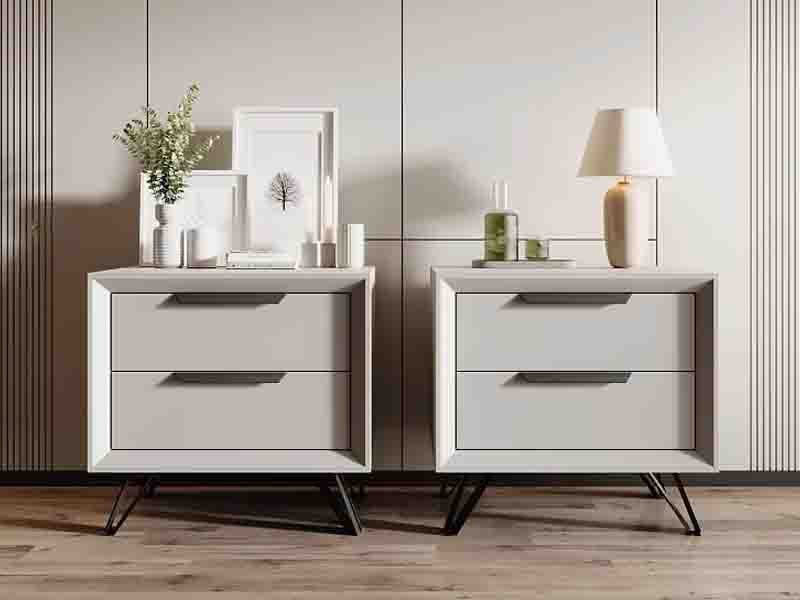
Understanding MDF’s Lifespan Myths32
When I first bought my MDF bookshelf, I expected it to last only a few years. This belief came from stories I had read online. Many people think MDF is only for short-term use. These myths are common. But my shelf has lasted eight years now. I learned proper care33 can change everything. MDF, or Medium Density Fiberboard, is made from wood fibers and resin. When made well, it is strong and stable.
What Helps MDF Furniture Last?
Several factors affect how long MDF lasts:
| Factor | Impact on Durability | Why It Matters |
|---|---|---|
| Proper Construction | High | Prevents weak points |
| Quality Finish | High | Seals and protects the MDF |
| Avoiding Water | Very High | MDF can swell when wet |
| Avoiding Overload | High | Prevents cracks and sagging |
| Fastener Tightening | Medium | Stops joints from loosening |
| Regular Care | High | Keeps the surface intact |
You must avoid water exposure above all. If water seeps through paint or sealant, the fiberboard swells. Surface damage often starts here. I remember my own mistake. I let a plant leak water on the MDF side table. It bubbled on the surface. After that, I realized how important paint and sealant34 are. Checking the tightness of screws and bolts once a year also helps. Loose fasteners strain the joints. Small fixes keep the whole piece stronger.
Why Does MDF Get a Bad Reputation?
People often compare MDF to solid wood. Solid wood lasts a long time if you care for it. But not all MDF is equal. Entry-level MDF with thin paint peels or breaks early. High-density boards with industrial-grade finishes resist more damage. Still, even with the best materials, careless use shortens their life. Dropping heavy items, dragging across floors, or ignoring simple maintenance will lead to damage faster.
Narrowing the Gap: MDF vs. Solid Wood
I sometimes ask friends—do you check your furniture’s hardware each year? Most say no. But even solid wood loosens or cracks if you ignore it. Both materials need some care. For MDF, thorough paint or laminate finishes are the top protectors. If you keep the surface barrier strong, the fiberboard stays dry and solid. You do not need expensive tools for this. A soft cloth, mild cleaners, and a screwdriver for loose fasteners will do.
Takeaways: How to Make MDF Last
You can make MDF furniture last as long as—or close to—solid wood. Watch for water, treat the surface well, and run simple checks. My old bookshelf looks as good as new, mostly because I learned these lessons. MDF’s lifespan surprises many owners in the end. Your actions decide if it fades fast or serves you for over a decade.
MDF furniture can last 10-15 years with proper care and construction.True
With appropriate maintenance, finishes, and avoiding water exposure, MDF can achieve a lifespan comparable to solid wood.
MDF furniture is always considered inferior to solid wood and has no potential for longevity.False
While MDF is often compared unfavorably to solid wood, it can last long with proper care, challenging the belief that it is always inferior.
9. How Can You Ensure MDF Furniture Lasts for Years?
MDF furniture often fails early due to overlooked design flaws. This causes frustration and costs for owners. I explain how following proven practices makes furniture last.
Building durable MDF furniture requires careful design, edge sealing against moisture, and joinery that allows for expansion. These steps prevent issues like sagging, swelling, and joint failure, ensuring your furniture remains strong and reliable over time.

Understanding the Cornerstones of Durable MDF Design
When I first bought a bookshelf made of MDF, I liked how smooth it looked. After a year, the shelves bowed under my books. I learned that even strong boards can fail if the builder overlooks critical design limits. The main point in MDF design is span limitation. MDF acts differently than solid wood. MDF sags sooner when the shelf is too long or lacks enough support.
Shelf Span and Support: The Heart of Strength
If a shelf spans35 too far without good support, it will sag. Engineers measure how much a shelf deflects under weight. For MDF, even small changes in length can make a big difference in bending. See how shelf length, thickness, and weight interact in the table below:
| MDF Thickness | Maximum Recommended Span (cm) | Typical Book Load (kg/m) |
|---|---|---|
| 12 mm | 60 | 20 |
| 16 mm | 80 | 20 |
| 18 mm | 90 | 20 |
Good design follows these limits. I always check them before building any MDF furniture to avoid future problems.
The Importance of Edge Sealing36
Edges and machined parts are weak points in MDF. They absorb moisture faster than the finished surfaces. If left exposed, moisture causes swelling and softening. Builders use special sealant or paint to close off these open edges. This step stops water from entering and preserves the furniture’s shape and strength. I once skipped this step on a cabinet. Soon, the doors stuck and the edges looked rough.
Allowing for Movement in Joinery37
MDF can expand and contract with changes in humidity. Unlike hardwood, MDF does not “move” as much, but it still changes. If the joinery is too tight, boards can split or joints may fail over time. To prevent this, I plan for slight movement. I use flexible adhesives and leaves small expansion gaps where needed. This lets the furniture handle small shifts in size, just like a bridge has room to flex without breaking.
Why These Details Matter
Ignoring these best practices38 might not show problems right away. Over months and years, small weaknesses become large failures. A bookcase sags. A table bulges. Drawers stick. All for want of careful engineering, edge treatment, and smart joinery. That is why I never skip these rules when building or buying MDF furniture.
Summary Table: Key Points to Remember
| Best Practice | Prevents | How It Works |
|---|---|---|
| Respect span limits | Bowing or sagging | Limits shelf length by thickness |
| Seal all edges and cuts | Swelling, deformation | Blocks water from unfinished surfaces |
| Allow expansion and contraction in joints | Cracks, failed joints | Absorbs small changes in dimensions |
Paying attention to these small details turns MDF pieces into long-lasting, reliable furniture. I have seen the difference firsthand and always recommend these methods for every project.
Proper design and edge sealing can enhance the durability of MDF furniture.True
Following established design practices and sealing edges effectively prevents moisture damage and structural failure in MDF furniture.
MDF furniture is impervious to moisture, requiring no special treatment for durability.False
MDF is susceptible to moisture absorption, which can lead to swelling and damage, necessitating the use of edge sealing for long-lasting quality.
10. How Does MDF Furniture Score on Sustainability Today?
Cheap materials feel better for wallets now. But can they also help the environment long term? Many overlook the role MDF plays here.
Modern MDF is engineered with post-industrial wood fibers and low-emission adhesives, cutting carbon footprints versus hardwoods. Its durability reduces waste and, with proper sourcing and safe finishes, it earns impressive sustainability credentials.
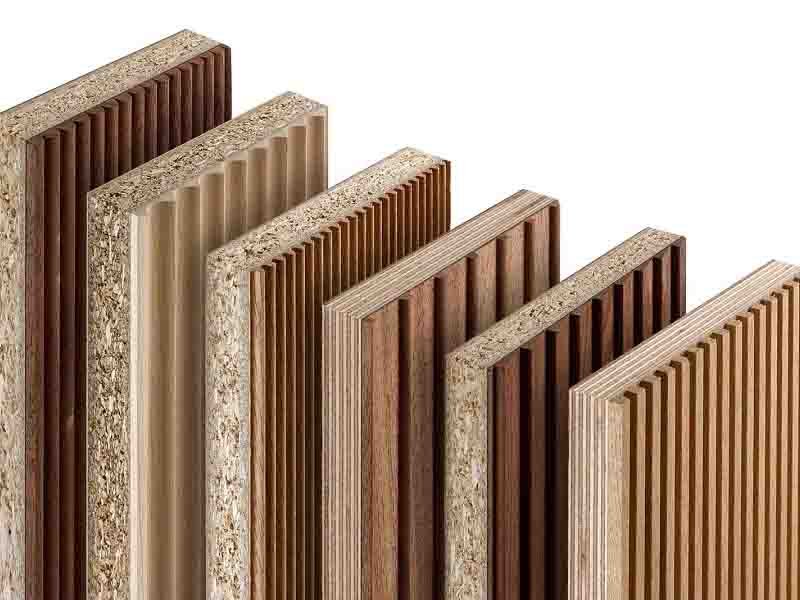
What Makes MDF’s Carbon Footprint Lower Than Hardwoods?
Manufacturers today use a high percentage of post-industrial wood fiber to create MDF panels. This practice diverts waste from landfills and limits the need for logging old-growth forests. If we look at raw environmental numbers, MDF’s cradle-to-grave story is different from traditional timber.
Here is a quick comparison table:
| Feature | MDF with Recycled Fiber | Tropical Hardwoods |
|---|---|---|
| Raw Material Source | Post-industrial waste | Virgin forest logs |
| Average Carbon Footprint | Lower | Higher |
| Longevity Potential | High (if finished well) | High |
| Formaldehyde Emissions | E0/E1 = Very Low | None, unless finished |
| Sourcing Control | Certified possible | Often problematic |
I learned this first-hand while replacing several pieces in my home. MDF options usually weighed less, but the real difference was longer-term. My shelves made from E0-grade MDF39 lasted through several moves, leaving less behind than cheap particleboard or unprotected plywood.
Why Durability Matters for the Environment
Durability links directly to waste reduction. A table or shelf that lasts ten years instead of three means less material discarded and fewer resources used for replacements. That improves what experts call “cradle-to-grave” performance: the total environmental impact from production to disposal.
MDF’s strength once relied on glues high in formaldehyde. Many older panels gave off unsafe gases. Today’s E0 and E1 grades have drastically improved air quality impact, with far lower indoor emissions. My E0 bookcase, tested with a home air monitor, showed no measurable spike even with the windows closed.
Responsible Sourcing and Finish Systems
Responsibility starts in the woods. Look for MDF certified by bodies like FSC or PEFC. These labels show that the fibers come from responsibly managed forests40and verified recycled streams.
Finishes also matter. Low-VOC paints and sealers not only help with air quality but also extend a product’s usable life. I noticed wear first on uncoated MDF edges. Since I switched to water-based lacquers, every surface looks new longer and can be re-coated easily.
Final Thought
Modern MDF, when made and finished well, stands as a solid sustainable choice. Ask about recycled content, look for E0/E1 emissions, and choose certified sourcing. Furniture made with these priorities often outlasts expectations and supports healthier spaces—inside and out.
Modern MDF furniture is made with post-industrial wood fibers and low-emission adhesives, making it more sustainable than traditional hardwoods.True
Current MDF production utilizes recycled materials and safer adhesives, significantly reducing its environmental impact compared to virgin hardwood.
MDF furniture is always made from virgin forest logs.False
MDF furniture is primarily produced from post-industrial waste, not from virgin forest sources, which contrasts with traditional hardwood furniture.
Conclusion
MDF furniture offers moderate durability, best suited for non-loadbearing applications with proper care, moisture resistance, and high-quality finishes essential for longevity and environmental sustainability.
-
Explore the pros and cons of MDF furniture to make an informed decision about its durability and suitability for your needs. ↩ ↩
-
Discover the mechanical properties of MDF to assess its strength and durability for your furniture projects. ↩
-
Discover how design flexibility in MDF can enhance your furniture projects, allowing for creativity and customization in your home or office. ↩
-
This resource will provide you with practical tips to maintain your MDF furniture, ensuring longevity and durability against common issues. ↩
-
Discover the benefits of composite products, which can enhance your understanding of material choices in construction and furniture making. ↩
-
This link will guide you through various methods to enhance MDF's strength, ensuring your furniture lasts longer and performs better. ↩
-
Understanding weight distribution is crucial for the longevity of your MDF projects; this resource will clarify its significance and best practices. ↩
-
Explore the advantages of MR MDF to protect your furniture from water damage and ensure longevity. ↩
-
Discover the top high-grade sealants that can protect your MDF furniture from moisture and extend its lifespan. ↩
-
Learn about the risks of using MDF furniture outdoors and how moisture can damage it, ensuring you make informed choices. ↩
-
Explore the advantages of MR-MDF panels to understand why they are ideal for kitchen cabinets, especially in humid environments. ↩
-
Explore this link to discover effective maintenance tips that can help prolong the life and appearance of your MDF surfaces. ↩
-
Learn more about Brinell hardness to understand how it impacts the durability of materials like MDF compared to hardwoods. ↩
-
Learn about HPL and how it can significantly improve the durability and longevity of MDF surfaces in high-traffic areas. ↩
-
This link will offer practical tips to enhance the durability of your MDF furniture, ensuring it lasts longer and looks great. ↩
-
Understanding MDF's versatility can inspire innovative uses in your projects, maximizing its potential in design and functionality. ↩
-
Understanding the causes of screw loosening can help you choose better materials and techniques for your projects. ↩
-
Exploring smart hardware options can provide innovative solutions to enhance the performance of your MDF furniture. ↩
-
Explore this link to understand how confirmat screws enhance the durability and strength of furniture joints, ensuring long-lasting assembly. ↩
-
Discover how using wood glue with screws can significantly enhance the grip and stability of your furniture joints. ↩
-
Learning about careful handling techniques can prevent damage and ensure your MDF projects remain in great condition. ↩
-
Understanding edge durability can significantly enhance the longevity of your MDF projects, ensuring they withstand daily use. ↩
-
Explore the advantages of plywood, including its strength and resilience, to make informed furniture choices. ↩
-
Discover why solid wood is valued for its longevity and repairability, making it a top choice for furniture. ↩
-
Explore this link to discover the best materials for durable shelving solutions that can withstand the test of time. ↩
-
This resource will guide you on materials that provide the best aesthetic results for your woodworking projects. ↩
-
Exploring FR-MDF can provide insights into safer building materials that enhance fire safety in various environments. ↩
-
Understanding the impact of strong acids or alkalis on MDF can help you choose the right cleaning products and maintain your furniture better. ↩
-
Following manufacturer’s care guidelines is crucial for maintaining the integrity of your MDF furniture; learn more to protect your investment. ↩
-
Exploring the reasons to avoid harsh cleaners can save your furniture from damage and prolong its lifespan. ↩
-
Building codes ensure safety and compliance. Discover the specific requirements for fire-retardant materials in your area by exploring this resource. ↩
-
Uncover the truth behind MDF lifespan myths to better understand its durability and maintenance needs. ↩
-
Learn effective care tips to enhance the longevity of your MDF furniture and keep it looking new for years. ↩
-
Understanding the role of paint and sealant can enhance your furniture's durability and appearance, ensuring it lasts longer. ↩
-
Understanding shelf span is crucial for preventing sagging and ensuring the longevity of your MDF furniture. This link will clarify those concepts. ↩
-
Understanding edge sealing is crucial for maintaining the integrity of MDF furniture and preventing moisture damage. Explore this resource to learn more. ↩
-
Learn how allowing for movement in joinery can prevent future issues in MDF furniture, ensuring durability and longevity. This resource provides valuable insights. ↩
-
Discover essential best practices for building MDF furniture to avoid common pitfalls and ensure quality craftsmanship. This link offers expert advice. ↩
-
Explore this link to understand the advantages of E0-grade MDF, including its environmental impact and durability compared to other materials. ↩
-
Discover the significance of responsibly managed forests and how they contribute to sustainable materials like MDF. ↩
